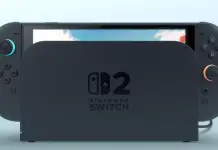The free-to-play (F2P) game model has redefined how games are developed, distributed, and monetized. Games like Genshin Impact and League of Legends have shown developers the immense revenue potential of free games with in-game purchases, adverts, or subscription services. But will the free-to-play game model still hold relevance in 2025, or will we see things change throughout the year?
Proven success
The F2P model has been hugely successful. When developers remove the upfront cost barrier, they can attract massive audiences, especially in regions where disposable income might be limited. Once players are enjoying the game, then optional microtransactions (battle passes, in-game currency, etc) generate revenue.
This model has meant games like League of Legends and Call of Duty: Warzone have enjoyed long lifespans through multiple updates. F2P games are particularly popular with mobile gamers, one of the biggest segments in gaming in the US, where players can play casino games for free. Will it last forever? The longevity of free-to-play games may depend on a few factors.
Challenges to the F2P model
While F2P games continue to thrive, the model isn’t without its criticisms and hurdles. Over time, many players have grown weary of monetization strategies, particularly when they affect gameplay balance. Some players turn away after pay-to-win mechanics and overprized items. Regulatory scrutiny is increasing. Countries like Belgium and the Netherlands have already banned loot boxes (random game rewards in exchange for cash), and other countries may follow.
There’s also the issue of market saturation. There are countless games flooding the market, making it more difficult for titles to stand out. In an effort to stand out, more developers might invest in better graphics and sophisticated gameplay, and the cost of development might not be recouped through microtransactions.

Ubisoft’s XDefiant shuts down
On 3 December, Ubisoft executive producer Mark Rubin announced XDefiant will be shutting down. Rubin said that F2P games “take a long time to find their footing and become profitable.”
In the end, he said, “the journey had [become] too much to sensibly continue” with XDefiant. It was Ubisoft’s fastest game to break 5 million users, and by the end, 15 million people had played.
In an internal message that was later shared on Ubisoft’s website, Marie-Sophie de Waubert, chief studios and portfolio officer, wrote that the company hadn’t attracted and retained “enough players in the long run to compete at the level we aim for in the very demanding free-to-play FPS market”.
New player registrations will no longer be available, but existing players can play until June 3, 2025.
Subscription services challenge F2P
Game subscription services have had a significant impact on free-to-play games. Services like Xbox Game Pass and PlayStation Plus primarily cater to premium games, but they’ve influenced how players perceive value and engage with games.
There’s the competition for time and attention. If a player has a Game Pass subscription, how likely are they to spend much time (or money) on initially free-to-play titles? The “all-you-can-play” nature of subscriptions has changed expectations. With no additional costs later on, players may be less tolerant of aggressive monetization practices.
But the subscription model also brings some opportunities for F2P developers. Subscriptions often include F2P games in their libraries, introducing them to players who might not have discovered them otherwise. Developers can seek partnerships with subscription platforms to gain visibility and include exclusive content. We might see more hybrid monetization models where developers offer optional subscriptions within games themselves.
Final word
It remains to be seen how F2P games will fare in 2025, but with mobile gaming still huge and several titles still played by millions of gamers, it doesn’t look like they’re going anywhere just yet. With more players taking advantage of subscription services, it will be interesting to see whether hybrid monetization becomes more widespread.




































